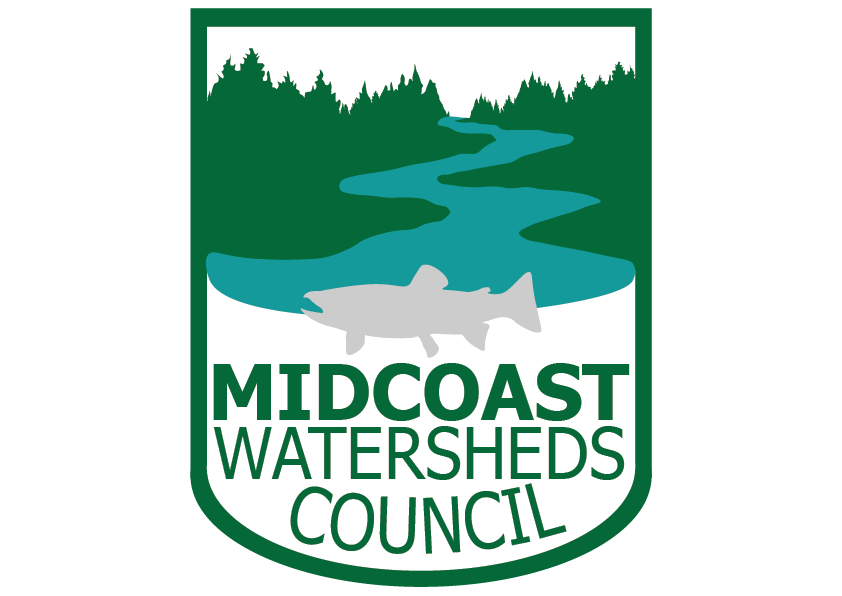We all know the Central Coast is a green place, and this can be both a friend and a hindrance to restoring streamside sites to improve habitat. While our mild, wet weather can help our favored native species establish, it unfortunately also provides pretty excellent conditions for invasive species to get a foothold. The task of maintaining restoration plantings has kept our restoration crew from the Lincoln Soil and Water Conservation District busy this spring, and will continue to over the summer growing season.
In the large photo above, the crew members' hard work brush cutting around Western red cedar trees behind the elk fences will give these young trees the best chance to grow and eventually shade out invasive reed canary grass. In the very long term, these trees will become a source of large wood to Little Lobster Creek and will help create pools and sort gravels, for salmon, lamprey, and freshwater mussels to utilize.
While Restoration Technician Dog, Tahoma, in the photo on the left makes this work look easy, trying to spot the crew below makes it more appreciable how much wading through vegetation is necessary to access the over 4,400 native species we planted to clear the way for them to thrive.
Next week, lupine and camas grown from seed will be planted in seasonal wet swales, and more follow up planting of trees and shrubs is set to occur once the rains return in the fall.



